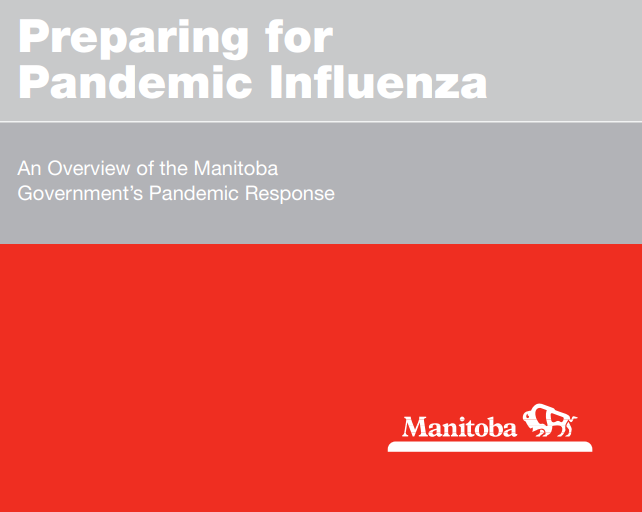The COVID-19 pandemic currently affecting Manitoba and the rest of Canada might be unprecedented but it wasn’t unexpected.
The provincial government’s Office of Disaster Management drafted flu pandemic preparedness guidelines for municipalities, schools and business owners as far back as 2005 - prior to the H1N1 influenza pandemic - making several correct assumptions about how a pandemic might develop and play out, while failing to predict some of the actions and repercussions resulting from the ongoing novel coronavirus pandemic.
Preparing for Pandemic Influenza: an Overview of the Manitoba Government's Pandemic Response was created in November 2005, using scientific models based on the 2018 Spanish flu pandemic, a 1957 pandemic and the 1968 Hong Kong flu pandemic to guide its predictions and associated responses.
The document estimated that the province would have two to four months’ lead time from the beginning of a flu pandemic in another part of the world before it reached Manitoba, though it granted that it could be shorter, and correctly predicted that there would initially be no vaccine for the disease, which is the case for COVID-19. It predicted that the first wave of disease could last six to eight weeks (May 7 marks eight weeks since the first positive test for the coronavirus in Manitoba was announced March 12, the day after the World Health Organization classified the spread of the novel coronavirus as a pandemic and a little over two months since the first cluster of cases was identified in Wuhan, China). The document also says that a second wave could follow within three to nine months and might possibly be more severe. The pandemic response document also predicted quarantines, travel restrictions, limits on public gatherings and cancellation of major public events, as well as the possibility of schools and child care centres being shut down, all of which have come to pass this year.
A document prepared for local governments, also in November 2005, foresaw that a pandemic could cause significant absenteeism and disrupt supply chains while also dampening local economies and reducing tax revenues. It also recommended creating buffer zones between workers and members of the public, and giving employees the ability to work from home to reduce potential exposure to whatever virus is causing the pandemic, though it failed to specify how meetings of elected officials, which are usually open to the public, should be adapted to the circumstances of the pandemic.
A provincial government document providing pandemic guidelines to Manitoba businesses was produced in June 2006. It noted that contingency planning for a pandemic was essential, as many small- and medium-sized businesses have failed within a few years of past pandemics. In addition to the employee absenteeism and supply chain disruptions noted in the document for local governments, customer loss was also identified as a potential pandemic effect, though it attributed this loss to fear of gathering in public, rather than to public health orders preventing some businesses from operating.
A fourth preparedness guideline document for kindergarten to Grade 12 schools was completed in October 2007. It noted that schools might have to be closed as a result of a pandemic and that instruction for students would have to be delivered via the internet or take-home work packages, which could require some staff to take on duties that they don’t normally perform, such as delivering materials to students, as the School District of Mystery Lake employed educational assistants to undertake this year.
The City of Thompson’s disaster plan, last updated in 2016, did not include a pandemic among its projected disasters - forest fire, mine accident, chemical accident, winter power failure, air crash, road or rail crash, missing persons, flood, tornado/windstorm or radiological accident - though it says it could apply in other situations “as it provides for essential co-ordination and control that are necessary whenever and wherever a number of services, departments and agencies are involved in an operation.”




